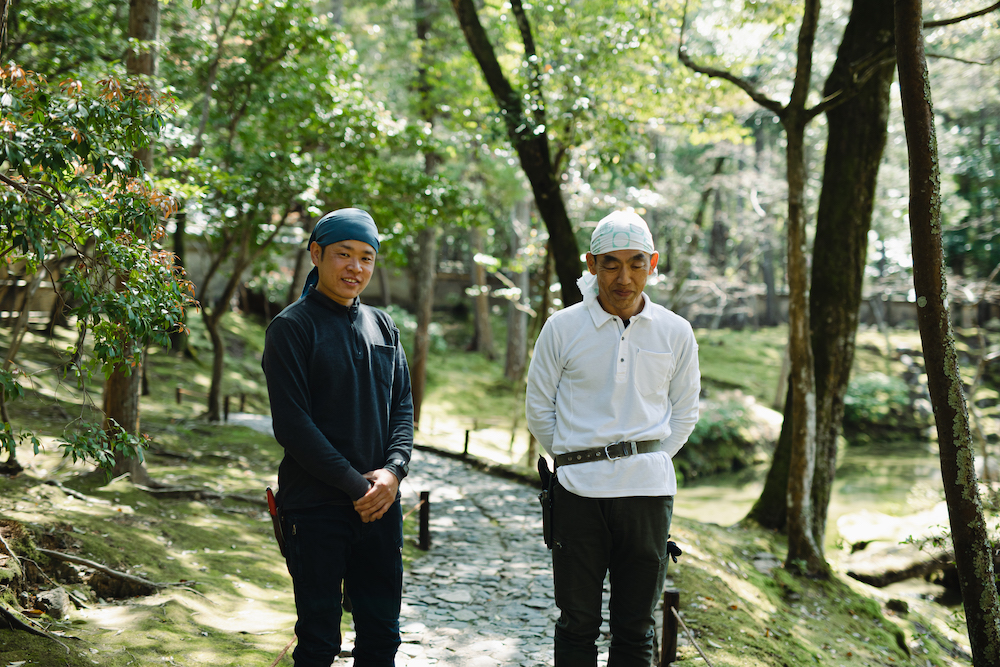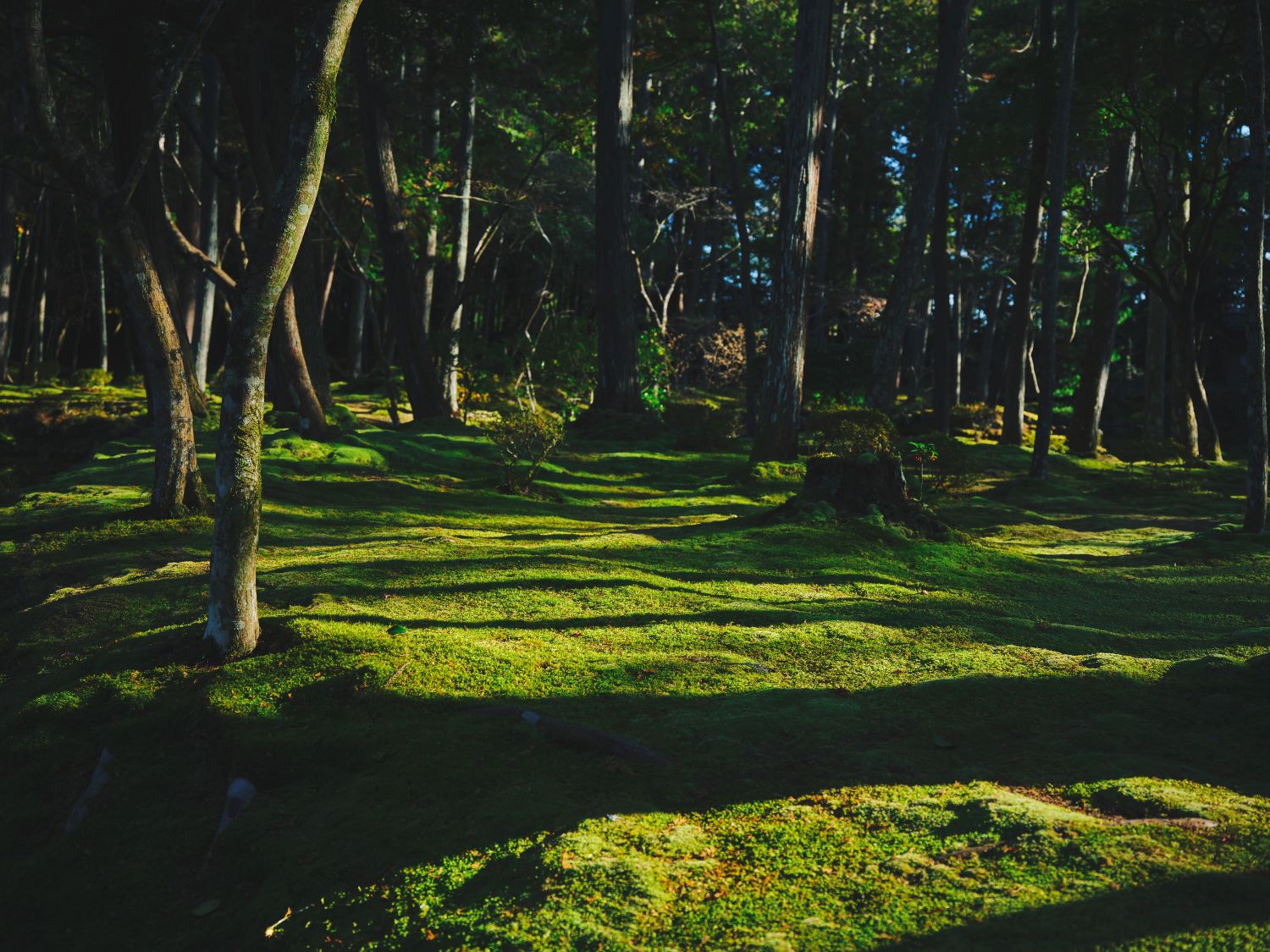2023.12.21
People Preserving Saihoji for Future Generations “Temple Staff”
The Work of Each Day Creating the Story of Saihoji:

Saihoji Temple is known worldwide for its “Moss Garden.” In order to welcome visitors each day, many people support the temple and its garden with their expert work. In this series, we spotlight the work of those involved in Saihoji, and we will explore what it means to support culture and connect to history.
The second installment focuses on Saihoji’s administrative staff. Far more than just accepting visitors and giving them guidance, the staff perform a variety of duties. They are the faces of Saihoji. In this issue, we interviewed Taniguchi Koichi about the lessons he has learned and the insights he has gained through his work as a member of the temple’s administrative staff.
Taniguchi Koichi
A native of Kyoto, Koichi first came to work at Saihoji in February 1987. For the last 35 years, he has worked as staff of Saihoji, and being the most senior member today, he is now leading the team.
Every Moment at Saihoji is a Learning Experience
ーMr. Taniguchi, please tell us about how you ended up coming to work at Saihoji.
When I first finished school and joined the workforce, I went to work for an optician. It was the type of job where employees might get transferred to an entirely different part of Japan. Later on, due to family circumstances, I had to quit my job and return to Kyoto, and by chance, I found a job ad for Saihoji in the newspaper. I was 23 years old at the time.
ーWas there any particular reason or decisive factor that made you decide to come and work at Saihoji?
When I returned to Kyoto, my friends introduced me to several jobs, but many of them would have had me chasing numbers, whether sales performance, revenues, and so on. To be honest, I wasn’t sure I could do it. I knew nothing about the world of Buddhism or Zen, but I had this vague notion that a temple would be a calm and peaceful place to work, and so I applied. The previous chief priest interviewed me, and from what I heard later on, he decided on-the-spot to hire me. Perhaps it was fate.
ーHow did you feel when you actually began working at Saihoji?
The work of the temple staff is diverse, including giving visitors guidance and cleaning the temple grounds. I was incredibly nervous at first, because I had never done any of those things before. I had absolutely no experience telling people about the temple or striking a wooden block while chanting sutras to create rhythm, but it’s not as if visiting visitors will give us a pass, saying, “Let’s go easy on him.” I feel deeply responsible for this great institution, Saihoji, so I cannot neglect my duties. I wanted to be able to field any question and handle any request from anybody in the same way as my seniors, so I knew I had no choice but to study hard and perform my duties with sincerity.

ーHow did you study Zen and Buddhism on a daily basis?
Every day at the temple, I read books on Buddhism, and on my days off, I visited the library to read more. More important than my reading, though, was the lessons that Saihoji itself taught me. For example, I used to sit by the chief priest’s side and watch as he did his calligraphy. I would observe how he made ink with an inkstone, what kind of paper he would use, and how he would wield the brush. The way he would apply red ink to his seal and then press it onto the paper... At some point I would realize that I was holding my breath as I watched. We had calligraphy classes in school, of course, but as I explored the meaning of the Zen phrases he had written down, I came to feel that there were things that I could study in greater depth precisely because I was now in this place, Saihoji.
Whether it be manners, etiquette, culture, or nature, everything I have encountered at Saihoji contains surprises and discoveries. Every moment I have spent here is a learning experience, and before I know it, my world has expanded. It was that kind of thing over and over.
Connecting People and Saihoji
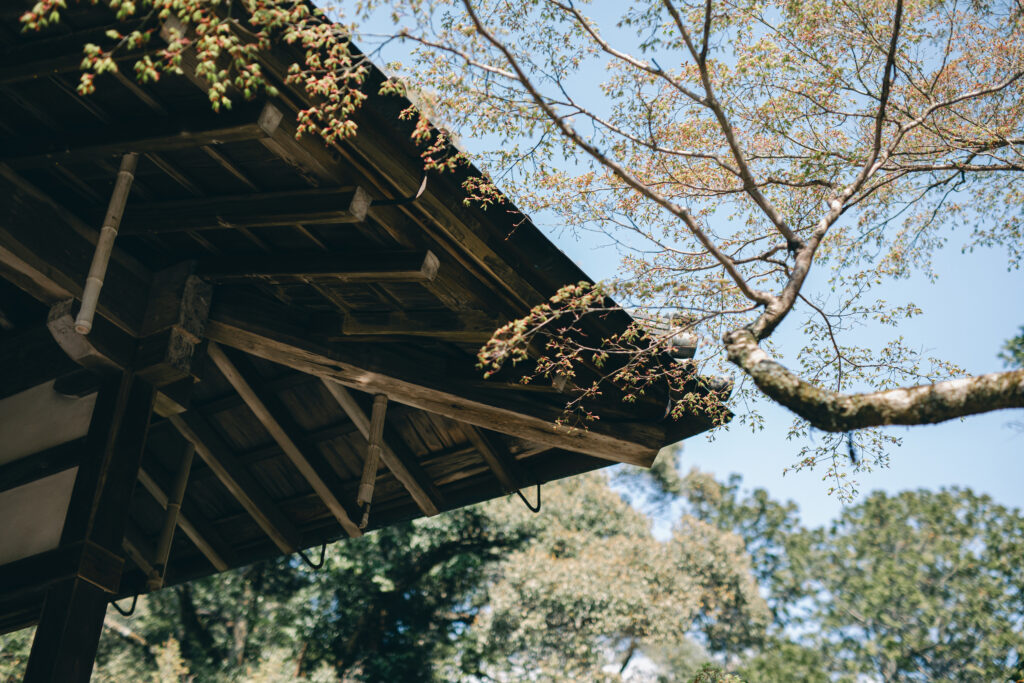
ーMr. Taniguchi, in your role as an administrative staff member at a temple, is there anything in particular that you keep in mind as you work?
I would have to say that I try to be sincere with everyone. When I think about what it means to work at a temple, we aren’t meant to treat visitors like guests and show them hospitality. Sometimes we also have to take a firm stance and tell people to follow the rules, inform them that “There is another way of looking at things,” and so on. As people who gather at Saihoji, it is important that we treat each other equally and with sincerity, regardless of whether we’re temple staff or visitors.
ーSincerely, yet “firmly and equally.”
That’s right. We have summarized the things we consider most important in four phrases, shared among temple staff. They are: “Firmly and equally,” “Do not create negativity,” “Communicate the goodness of each day,” and “Observe and be mindful.” Our team has grown in recent years, and we have more time to thoroughly discuss things. There is now a growing momentum to make Saihoji even better.
Are there any moments that make you happy while you are working?
Some visitors look completely different when they leave than when they arrived. Not in a negative way, of course, but with a radiant expression that shows how glad they are to have visited the temple. There are things that people only realize or face up to because they came here. When I consider how I may have played a part in bringing about this opportunity for their self-reflection, that makes me very happy.
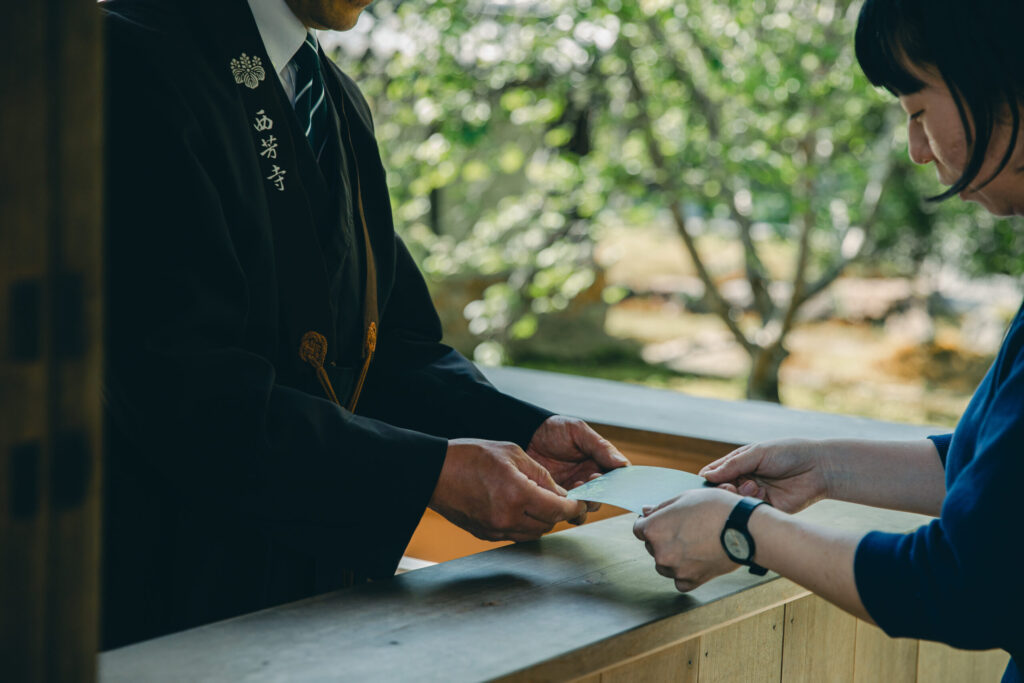
ーWhat, exactly, is the role of a member of the temple's administrative staff?
When I look back on our work, I see us functioning as a link connecting people and Saihoji. There are people who actually visit the temple, while others want to visit but cannot for various reasons, and then there are others who try to support Saihoji in ways other than visiting. I work hard every day to think about what I can do to connect these people with Saihoji.
We would be very proud if our interactions would make people feel closer to Saihoji and keep the temple in their hearts.
History is Made up of a String of Todays
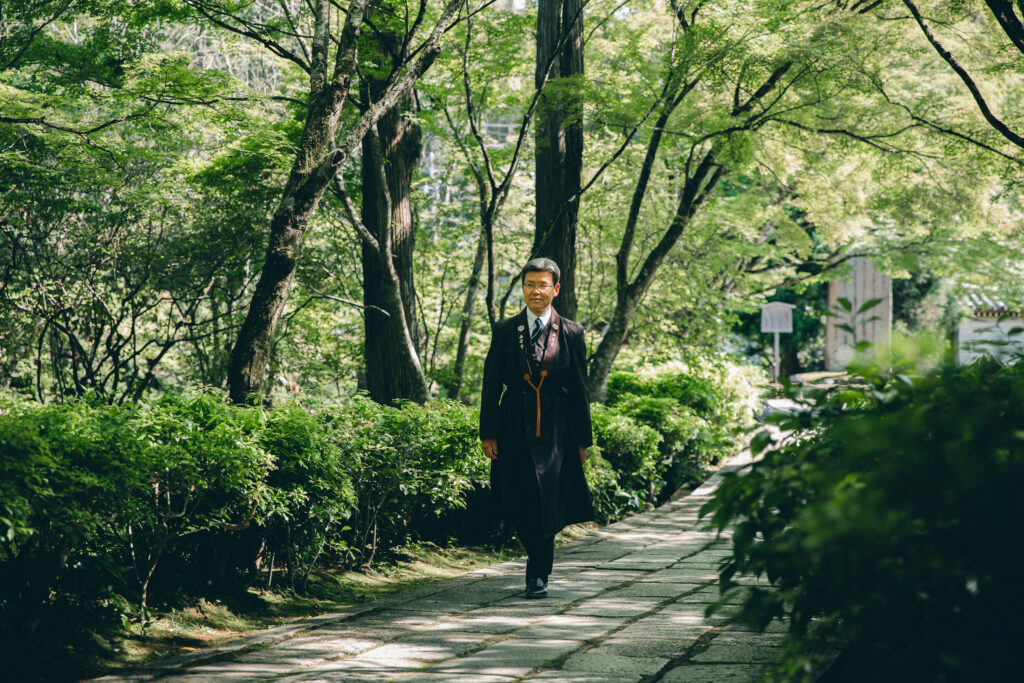
ーWhat kind of place is Saihoji to you?
If I were to summarize Saihoji in one phrase, it would be, “place of learning.” It is a place that stimulates and encourages discovery in multiple ways, and it is full of charms, no matter what slice of the temple you look at.
When I started working here, I was the youngest among the temple staff, but before I knew it, I had become the oldest. More and more frequently, other staff members come and ask me for my opinion on matters that they have pondered deeply. “What do you think, Mr. Taniguchi?” they ask. If my friends from school saw me like that, they would say, “You’re a completely different person!” I am proud to say that people nowadays sometimes point to me as an example to follow as temple staff. To be honest, I wasn’t that kind of person in the past, and I still feel like I have much to work on.
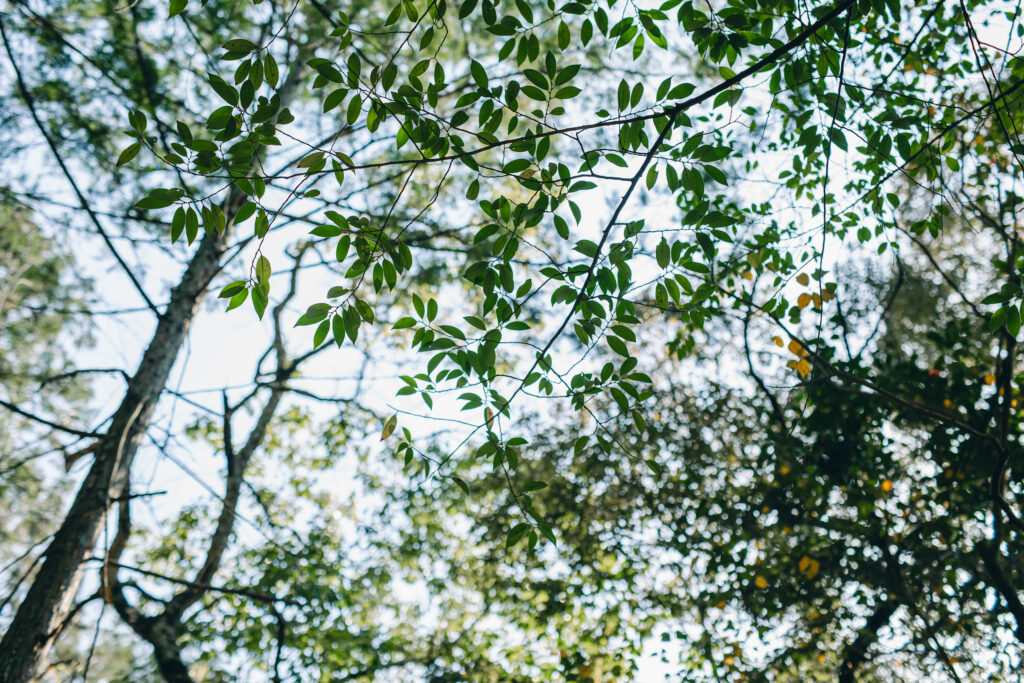
However, I have always been conscious of the fact that I am carrying the name of Saihoji on my shoulders. As my thoughts and attitudes change, so do my actions. Looking back, I wonder if this is what allowed me to grow and learn.
ーIt seems you treat the name of Saihoji with a great deal of respect.
In Saihoji, you can encounter numerous things that are quite exceptional. We call them “Honmamon.” In other words, the real deal. There’s nothing “normal” about the view you see at Saihoji. It’s not something you can take for granted, because it’s only made possible through the accumulation of history and the efforts of people working behind the scenes. The same can be said for the moss in the garden; it did not materialize in its current form over the span of just one or two days. There are things that only Saihoji could teach me and reveal to me. I hope to share even just a little bit of them with you.
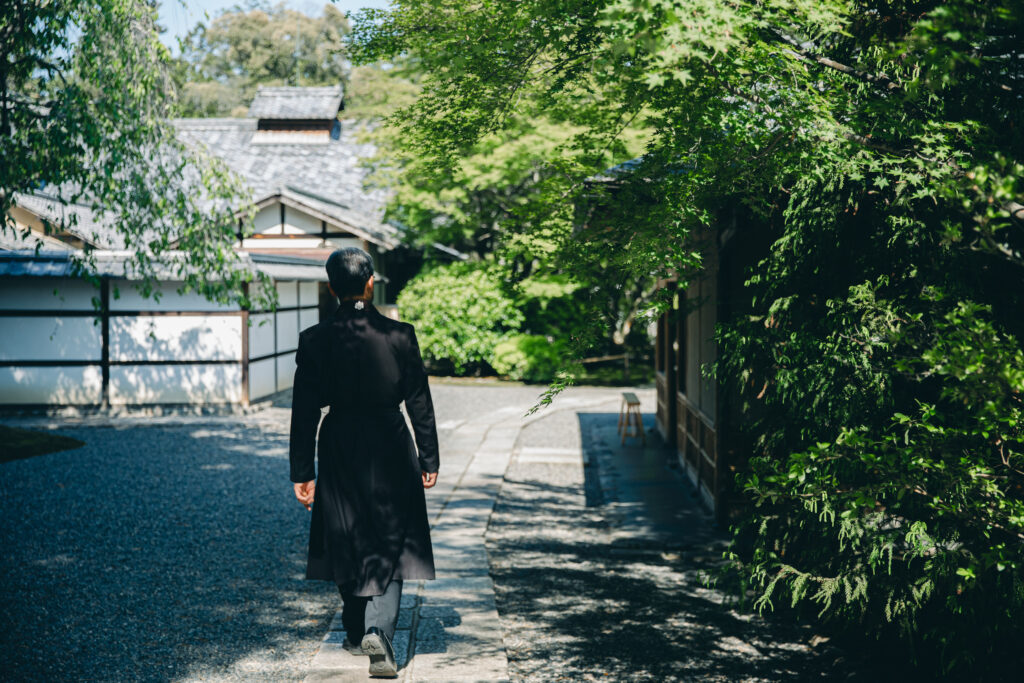
ーFinally, please tell us what you consider to be important in order to carry Saihoji into the future.
As members of the temple staff, we work behind the scenes. Our names will not go down in history. For us, the continuous string of each day creates the story of Saihoji. Without today, there is no tomorrow. If we cut corners today, it will affect those who visit Saihoji tomorrow, possibly leaving a bad impression that stays with them for five, maybe ten years. Until now, in my work, I have always emphasized “doing what needs to be done and doing so properly.”
Why should we preserve Saihoji in particular when there are so many other temples around? It is because this place is full of the charms and attractions of being “the real deal.” That is why I want to connect this temple to the future. I hope that Saihoji will continue to be an important place for all people. With such a future in mind, I will keep on building on my efforts, from one day to the next.
Edited by: MIYAUCIH Toshiki, TAWARAYA Ryusuke
Written by: OGURO Keitaro
Photographed by: SHINSHI Misa
*These photos were with permission.


